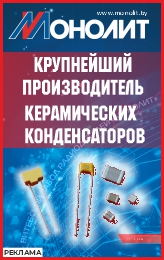Technology of Machining Optical Parts Made of KRS‑5 Crystals by Diamond Turning and Milling DOI: 10.22184/1993-7296.FRos.2021.15.1.18.28
The article concerns the development of a technology for machining workpieces from KRS‑5 crystals. The optimal machining method, as well as the method for determining the optimal orientation of the workpiece, was experimentally determined. The developed technology was tested in the manufacture of a beam-splitting ring. The results of metrological control of the ring, as well as ways of improving the quality and accuracy of machining are presented.
Dissimilar Metal Laser Welding. Review. Part 2 DOI: 10.22184/1993-7296.FRos.2021.15.1.30.44
The second part continues to review the domestic and foreign articles on the topic of dissimilar metal laser welding, in particular, titanium with aluminum, aluminum with copper and other most common metal pairs. Based on the analysis of scientific articles, it has been established that when welding titanium and aluminum butt joint, it is effitient to offset the laser beam to aluminum (ultimate strength 168–180 MPa), while it is effitient to influence the laser beam from the side of titanium in overlapping welding. The offset of the laser beam and welding modes significantly affect the thickness of the IML, which can be reduced to 2–6 microns with butt welding. When welding aluminum and copper, the laser beam needs to be biased towards the aluminum, both for overlapping and butt welding. The main operational property of the aluminum-copper compound is electrical conductivity, which directly depends on the thickness and composition of the IML. The technologies of welding titanium and magnesium, steel and copper, and other pairs of metals are also considered.
Diode Pumped Laser Power Supply for On-Board Application DOI: 10.22184/1993-7296.FRos.2021.15.1.46.50
Laser rangefinders and altimeters are increasingly being used in aeronautical engineering. Their high accuracy of range or altitude measurements, small dimensions and ease of integration into other on-board systems provide great potential for their use. However, the market is in need of commercially available laser power supplies operating stably from the on-board electrical mains, providing power up to 200 A and voltage up to 140 V in a pulsed mode. A power source for diode-pumped lasers for on-board use, operating from 27V mains, is proposed.
Diffraction Comparator for Authentication of Security Holograms on Documents. Modernization and Trial Operation DOI: 10.22184/1993-7296.FRos.2021.15.1.86.98
The article discusses a new experimental sample of a high-performance optoelectronic scanner device for authentication of security holograms on documents. It increases the speed of result obtaining due to using modern scanning systems, high-speed image sensors, custom components of the optical system in the scanner design. Correlation filters in the recognition algorithm for the information received from the hologram, significantly reduce the time and raise the reliability of the security hologram authenticity control.
Eye-Tracking Systems With a Single-Point Calibration on the Monitor DOI: 10.22184/1993-7296.FRos.2021.15.1.100.106
Existing gaze tracking systems use 3‑point or more calibration. This article discusses the algorithm for calibrating an eyetracker by only one point on the monitor. Similar system allows you to start working in a few seconds. The presented system can also be used in the military sphere: in aviation and ground vehicles with controlled sighting systems.
Broadband Quantum Noise Generator Based on a Controlled Integral Optical Interferometer DOI: 10.22184/1993-7296.FRos.2021.15.1.70.75
The work of a quantum noise generator in a band of at least 4 GHz, and with an excess of quantum noise over classical ones by 12–13 dB was demonstrated for the first time. The novel main element of such generator, an optical beam splitter with an electrically controlled splitting ratio, is made in the form of an integrated optical Mach-Zehnder interferometer on a lithium niobate substrate.
Prospects of Optical-Radio-Frequency Systems for the Atmosphere Remote Sensing DOI: 10.22184/1993-7296.FRos.2021.15.1.76.84
Means of the atmosphere remote sensing in the optical and radio frequency ranges are widely used in air navigation, flight safety technologies, meteorology, ecology, climatology and other areas. Lidar and radar systems have common principles of operation. Despite this common feature, they are traditionally divided according to the used electromagnetic radiation frequency ranges. The consequence of this separation is that their functionality and tasks are separated. However, as practice proves, the integrated use of optical and radio frequency radiation in atmosphere monitoring can lead to a synergistic effect and a significant expansion of the capabilities of such systems. The article discusses the possibilities and prospects for the joint application of optical-radio-frequency devices of atmosphere sensing.
Detection in the Terahertz Range. Part 1 DOI: 10.22184/1993-7296.FRos.2021.15.1.52.68
The paper discusses the problems associated with the development of technology for detectors of terahertz radiation. The main physical phenomena and recent progress in various methods of detecting terahertz radiation (direct detection and heterodyne detection) are considered. The advantages and disadvantages of direct detection sensors and sensors with heterodyne detection are discussed. In the first part, a number of features of direct detection are considered and a description of some types of terahertz detectors of direct detection is given.

 rus
rus TS_pub
TS_pub technospheramag
technospheramag technospheramag
technospheramag ТЕХНОСФЕРА_РИЦ
ТЕХНОСФЕРА_РИЦ


